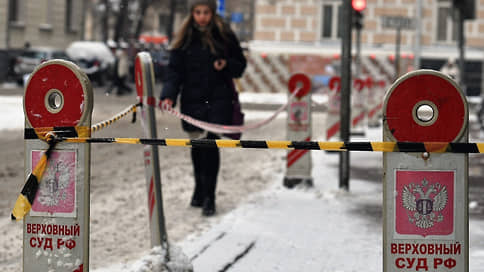Is it possible for banks to transfer funds using very good fake payments?
[ad_1]

The Supreme Court will decide whether the bank can be released from liability for transferring money using a fake payment order if the fake is of very high quality. The arbitration courts recognized that the bank is obliged to “monitor the legality of the write-off of funds” and ensure “an appropriate level of reliability,” and therefore must compensate the client for losses. But the credit organization succeeded in transferring the dispute to the Economic College of the Supreme Court, insisting that the counterfeit could not be determined visually, but only with the help of special knowledge and special means. The limits of banks’ liability for transferring funds using forged documents depend on the decision of the Supreme Court, lawyers note, warning about the danger of excessively narrowing or expanding these limits.
The Supreme Court will consider a dispute about the bank’s liability for payments based on forged documents. The story began in February 2020, when the bankruptcy trustee of the bankrupt Tatneft-Arkhangelsk LLC, Elina Kriksina, opened an account for the company with Sputnik Bank. From April to December 2020, the bank transferred 198 million rubles from this account to U-Capital. on payment orders signed by Ms. Kriksina, the purpose of which was “to repay current and registered claims of the creditor.”
In November 2021, the Central Bank revoked Sputnik’s license, and on December 1 filed a petition with the court to liquidate the bank. In the same December, the temporary administration of the bank refused to include the claims of Tatneft-Arkhangelsk in the register of creditors of Sputnik, after which Elina Kriksina went to court, saying that she had not given instructions for the transfer of funds.
Two forensic examinations confirmed the forgery of her signature and LLC seal on the payment slips. The arbitration courts recognized that Sputnik must compensate for “losses caused by the incorrect write-off of funds belonging to its client.” Court decisions emphasize that the bank, as a “subject of professional business activity in the field of conducting operations on customer accounts, carrying them out with a certain degree of risk,” is obliged to control the “legitimacy of writing off funds” and ensure “an appropriate level of reliability corresponding to the nature and scale of operations.” Sputnik “performed these duties improperly,” and the position on exemption from liability in the case when the signatures and seals visually match “contradicts the assurances of guarantees and security that the bank publicly provides in commercial offers,” the courts decided. Debt to LLC in the amount of 198 million rubles. was included in the register of creditors of Sputnik.
The bank’s shareholder and its liquidator (Deposit Insurance Agency, DIA) appealed these decisions to the Supreme Court. They insisted that the bank is responsible for writing off funds on behalf of an unauthorized person only when the forgery can be determined “by external signs by simple visual comparison with a sample signature and seal on the client’s card.” However, the expert in court concluded that in order to establish differences in signatures and seal impressions, the bank employee had to have special knowledge in the field of handwriting and the study of seal impressions, as well as have a microscope and other special equipment. “Neither the banking rules nor the terms of the agreement required verification of payment orders using special means,” the complaint says.
In addition, the applicants argued, manager Elina Kriksina was familiar with one of the owners of U-Capital and could have learned about the transfer of money to the company, and also had to “control the movement of funds for such large sums and for such a long period, including through Internet banking system. Based on these arguments, the case was transferred to the economic board, the meeting was scheduled for January 15.
Elina Kriksina told Kommersant that the DIA “did not explain where the counterfeit payments came from at the bank and tactfully avoided providing materials from the internal investigation.” She added that she was sent “fake account statements” from the bank’s official email, which the court found to be falsified and “excluded from the evidence in the case.” In addition, “a criminal case has been opened regarding the theft of money from the LLC, and preventive measures have been taken against the beneficiary and several bank employees,” Ms. Kriksina noted.
Business news – s8
[ad_2]
Source link





